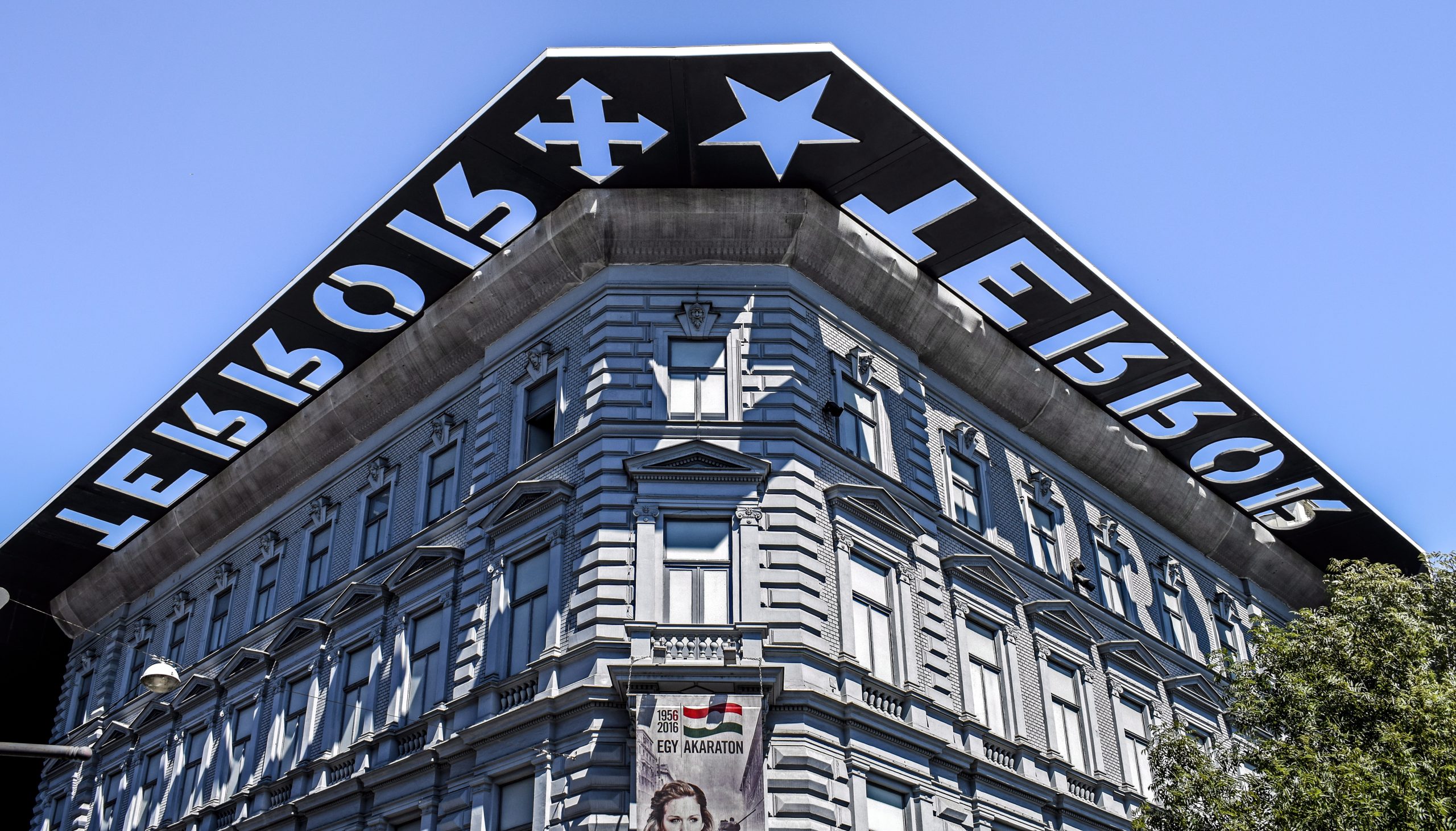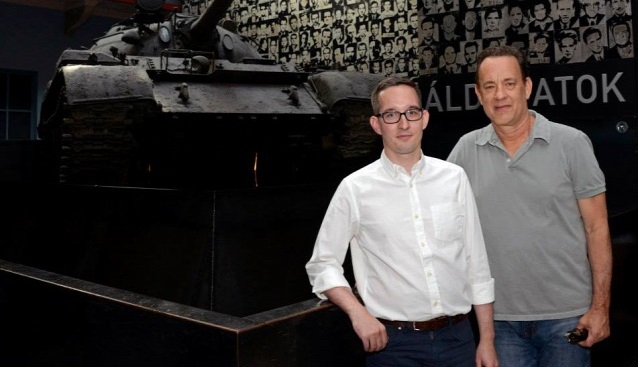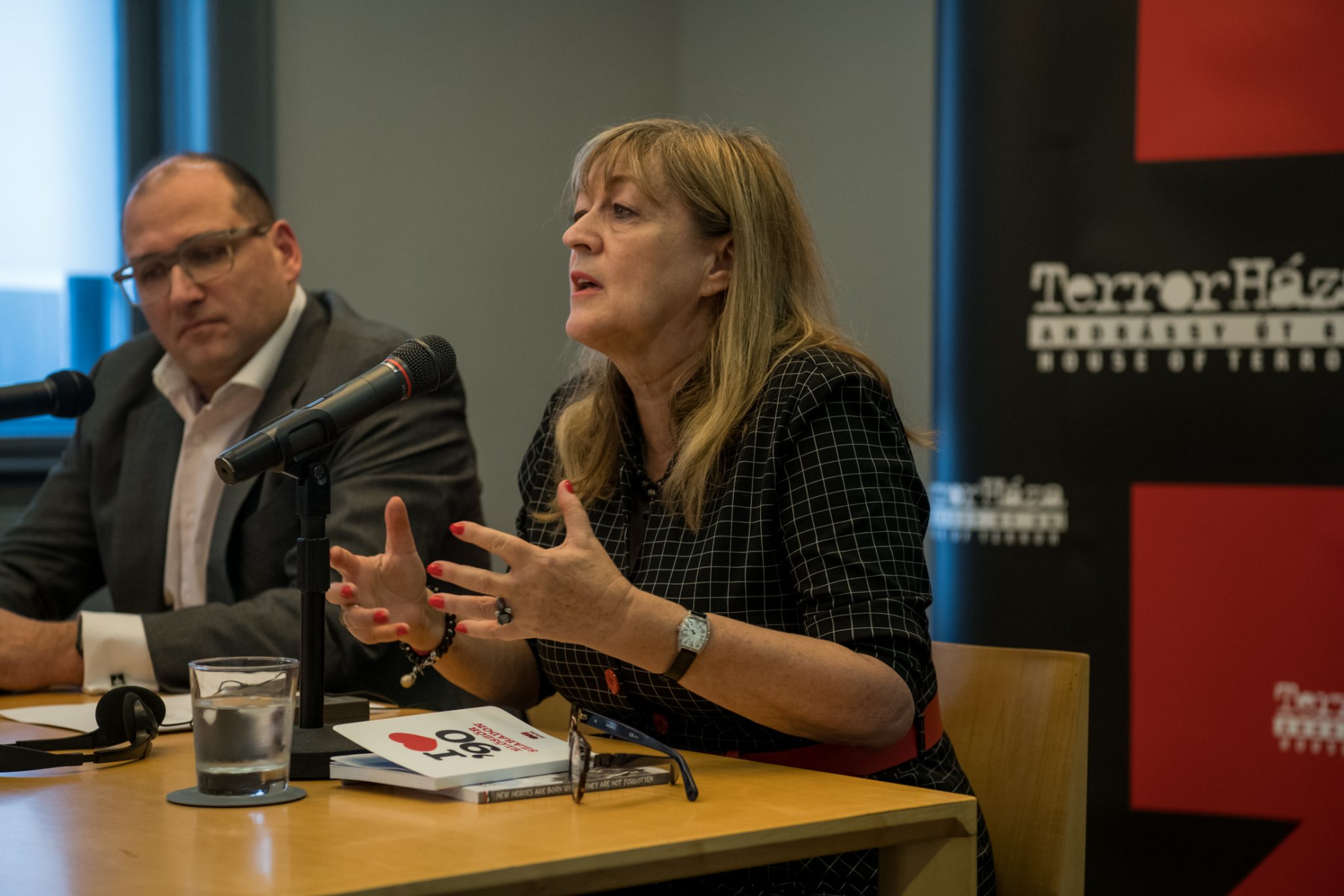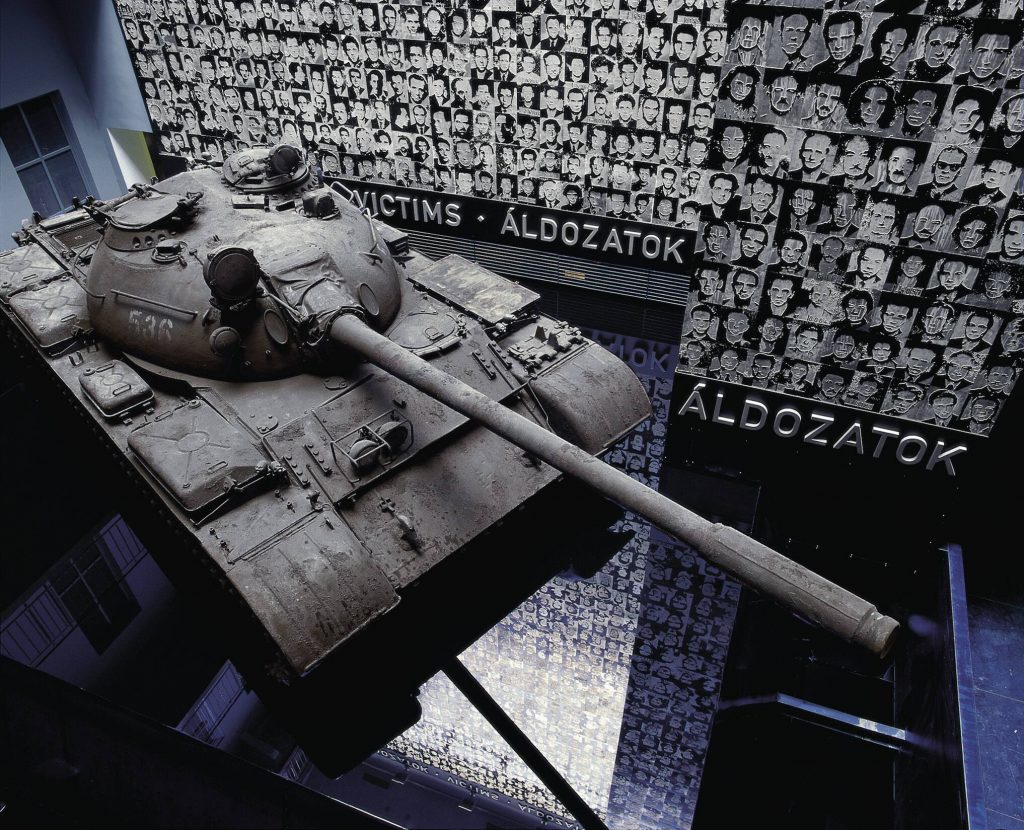
This year marks the 20th birthday of one of Hungary’s most emblematic museums, the House of Terror. Opened in 2002 in Budapest in commemoration of those who were held captive, interrogated, tortured, and killed by Hungary’s totalitarian regimes of the 20th century, while also demonstrating that the sacrifice for freedom was not in vain. The museum remains one of the most popular destinations of Hungarians and foreign tourists alike.
The House of Terror
Found on one of Budapest’s most beautiful boulevards and a major cultural hub, the location of the palace building at 60 Andrássy Avenue has a complex symbolic meaning. The building served as the headquarters of the pro-Nazi Hungarian Arrow Cross Party, which deemed it the House of Loyalty after taking power in 1944. Hundreds of victims, most of them Jewish, were tortured and executed in the basement of the place. Once the Nazis left and Budapest and Hungary were occupied by Soviet forces, the notorious Hungarian communist secret police (ÁVH) chose the same, now deserted building as headquarters with cynical deliberation. Although instead of “race”, “class” became the defining factor on who was to be considered guilty and who was to suffer and die, one thing remained the same: once again, masses of innocent Hungarians were imprisoned, tortured, and killed under 60 Andrássy Avenue.
Related article
Hollywood Star Tom Hanks Visits Budapest's "House Of Terror" Museum In Tribute To Victims Of Totalitarianism
Two-times Oscar-winning Hollywood superstar Tom Hanks has visited Budapest’s House of Terror Museum while in the Hungarian capital to shoot his new mystic thriller “Inferno”, adapted from Dan Brown’s bestselling novel. The actor is reported to be an avid fan of history, his father having served in the US Navy during the Second World War […]Continue reading
The communist regime was only forced to leave the building after the Hungarian Revolution of 1956, when offices were set up there. However, the blood of the victims who were tortured and died in the building couldn’t be washed away from its history. Thus, 60 Andrássy Avenue has lived on in the memory of the Hungarian nation as a symbolic scene of the terror enacted by 20th century totalitarian regimes.
Millennium Saw New Remembrance Policy
The idea of a museum was conceived by the first government of Viktor Orbán. It was created in 2002 under the direction of historian Mária Schmidt who became and continues to be the director-general of the institution. It was designed by Attila Kovács, a movie designer who worked on István Szabó’s Oscar-winning Mephisto.
The creation of the Museum also marked a significant change in the Hungarian remembrance policy, which had been extremely divided until then. The first Orbán-government, however, wanted to condemn not only communist but also fascist and Nazi crimes.
In addition to the idea of establishing the House of Terror, the political leadership of the time declared a memorial day for the victims of communist dictatorships in 2000 and a memorial day of Hungarian victims of Holocaust in 2001.
Related article
From Dictatorship to Freedom: Visit to the House of Terror – Hungary at First ‘Site’ Conference
One day prior to the Hungarian national holiday commemorating the 1956 revolution and freedom fighters, the journalists were offered the chance to visit the House of Terror Museum in order to get a full picture of 20th century Hungary, the world wars, the fascist and communist totalitarian regimes, and the struggles of the Hungarian people—and […]Continue reading
After a year-long renovation effort, the one of its kind House of Terror Museum, opened on 24 February 2002 with the purpose and mission to commemorate those Hungarian compatriots who were imprisoned, tortured and murdered in the building, while also demonstrating that the sacrifice for freedom was not in vain.
“Ultimately, the fight against the two cruelest systems of the 20th century ended with the victory of the forces of freedom and independence,” the museum highlights the message on its website.
Spread over three floors, elaborately designed exhibition halls and rooms present the chronology of the Hungarian totalitarian dictatorships. Atmospheric displays, inscriptions, pictures, audio documents and short video footages guide visitors along the path through the exhibition rooms. Perhaps the most shocking part of the tour can be found in the basement, where reconstructed cells and torture chambers give a glimpse into the horrors once taken place inside the building.
Fact
The museum is preparing
several programs to mark the anniversary of its opening. According to Gábor Tallai, the institution’s Program Director, the House of Terror Museum has three important dates ahead. The first of these was the upcoming anniversary, immediately followed by the Victims of Communism Memorial Day on 25 February. This is a particularly important date, as communism and the dictatorial regimes built on it caused immense suffering to people in many countries in the 20th century. The program director explained that additional surprise programs are being prepared for 26 February to further engage the public. There will be an open-air concert in front of the museum involving popular performers. The museum will also offer free entry, with a special informal history lesson where visitors will be able to join in the discussions.
The museum has also hosted a great number of temporary exhibitions over the years. One of them was devoted to the life of the English writer George Orwell, who became one of the greats of literature through his biting novels on the true nature of communism. But there was also an exhibition about Swedish architect and diplomat Raoul Wallenberg, who saved thousands of Jews in German-occupied Hungary during the Holocaust. There was also a special exhibition on the Ukrainian Genocide of Stalin, Holodomor and the Pan-European Picnic.
Controversies
Despite its long-lasting popularity, the museum has not escaped criticism and controversy. The institution was financed by the conservative Orbán government not long before the 2002 election campaign. Its main opposing force was the Socialist party, which was the legal successor of the Hungarian Communist Party. Hence, many accused Orbán of using the museum as a tool for his campaign. Furthermore many saw the institution’s several links to Orbán and his ruling party, Fidesz, as an issue.
Also, some historians, journalists, and political scientists have argued that the museum portrays Hungary too much as the victim of foreign occupiers and does not recognize enough the contribution that Hungarians themselves made to the regimes in question. Others found fault with the fact that far more space is given to the terror of the communist regime than the Nazis. Voices were also raised for not commemorating the Jewish victims with due emphasis.
One answer to these criticisms was that while the German occupation and pro-Nazi regime lasted less than a year, the Hungarian Communist regime lasted for four decades. House of Terror museologists also reminded critics that the Hungarian Holocaust has its own museum, within three kilometers distance, so there is no need to repeat its content.[/richfact]
International recognition for House of Terror Museum
Throughout its two-decade history, House of Terror has remained one of the most sought out museums among both Hungarian visitors and foreign tourists. A few years ago, the Friends of Hungary Foundation, publisher of Hungary Today, also hosted a visit for foreign journalists to the House of Terror Museum to learn more about 20th-century Hungary.
Related article
House of Terror Prison and Torture Cells Shock Foreign Journalists
This week, the Friends of Hungary Foundation, publisher of Hungary Today, hosted a three-day conference entitled “Hungary At First ‘Site’” for foreign journalists to get a better understanding of the Hungarian government’s decisions and the Hungarian way of thinking. On Wednesday morning, a few days prior to the national holiday commemorating Hungary’s 1956 revolution and fight […]Continue reading
Some of them, mostly those from the US, didn’t know much about the communist regime and found the exhibition extremely shocking. Meanwhile, they all agreed that the museum serves an important function of allowing those who didn’t live in the era to experience what it was like. The museum helps history come to life, and they all encouraged the idea of schools bringing students and educating them about the frightening reality of the 20th century in Hungary.
PM Orbán: House of Terror Museum key to representing those oppressed by Communist regime
Prime Minister Viktor Orbán on Friday marked the 20th anniversary of the House of Terror Museum, which he said represented the oppressed. “Its establishment meant that truth and lies were no longer defined by Communists but by those who were trampled by the regime,” he said.
The museum “manifests a simple narrative based on the similarities between Communism and Nazism,” he said in a video message. “It gives something important to young and old, eastern, western and Hungarian [visitors] that they cannot get elsewhere,” he said.
The museum also separates the “faces and names” of victims and perpetrators, “which communists meshed together so cleverly until the moment the museum was founded,” he said.
Communists no longer determine what is good and bad, what is true and untrue — that is now in the hands of those who were trampled, who lost everything. Some lost their lives and their families, others their wealth or career. Finally, they are the winners, and history is on their side,” Orbán said.
Featured photo by László Róka/MTVA



